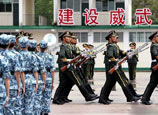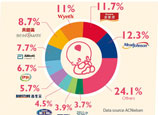
But China has to divert flow of money to high-returns sectors of the real economy to ensure continuous economic growth
Is China over-flush with money? This perhaps is one of the most controversial financial topics today.
Since the government announced a 4-trillion-yuan ($651.35 billion) stimulus package in 2008, liquid assets have been rapidly expanding in China - its money stock reached 200 percent of GDP at the end of 2012. In other words, China's money supply has surpassed that of the US, though its real economy is only half the size of the US.
Ironically, China's real economy is still thirsty for money. The "money drain" that has taken place over the past several weeks reflects the fragility of the real economy when liquidity is tightened.
The explanation to this seeming dilemma lies in the structural problems of China's financial system and the real economy. For a long time, China has been relying mainly on investment for economic growth. As a result, whether investment can have a higher return is key to the economic growth.
According to CEIC Data, an international database for emerging and developed markets, China's investment kept increasing for several years and reached 48 percent of GDP in 2011; the figure from the National Bureau of Statistics is even higher. That is not only more than twice the world average of 20 percent, but also higher than that of Japan and the Republic of Korea during their economic rise. It cannot remain so high forever, and China needs to forego its reliance on lower financial risks for growth.
China could, for instance, increase the return of investment capital to maintain a relatively high growth rate. In more popular terms, China needs to shift its economic growth from extensive mode to efficient mode through structural adjustment.
There are two prerequisites to realizing the job. First, the financial system must be able to properly allocate investment to sectors with high returns. And second, investors must be rational enough to find the sectors with high returns and put their money in them.
The problem is, neither prerequisite exists in today's China. Thanks to the government's restrained financial policy, China's financial system has become famous for its low efficiency and narrow service coverage, making it incapable of allocating money to sectors with high returns.
Worse, a large part of the investment with low-repaying cost is controlled by State-owned enterprises and local governments. A combination of data for the past decade shows that the average return rate of surveyed SOEs was below 6 percent, the lowest among all sectors.
 |
















 Elder couples celebrate golden wedding anniversary in Hangzhou
Elder couples celebrate golden wedding anniversary in Hangzhou


![]()
